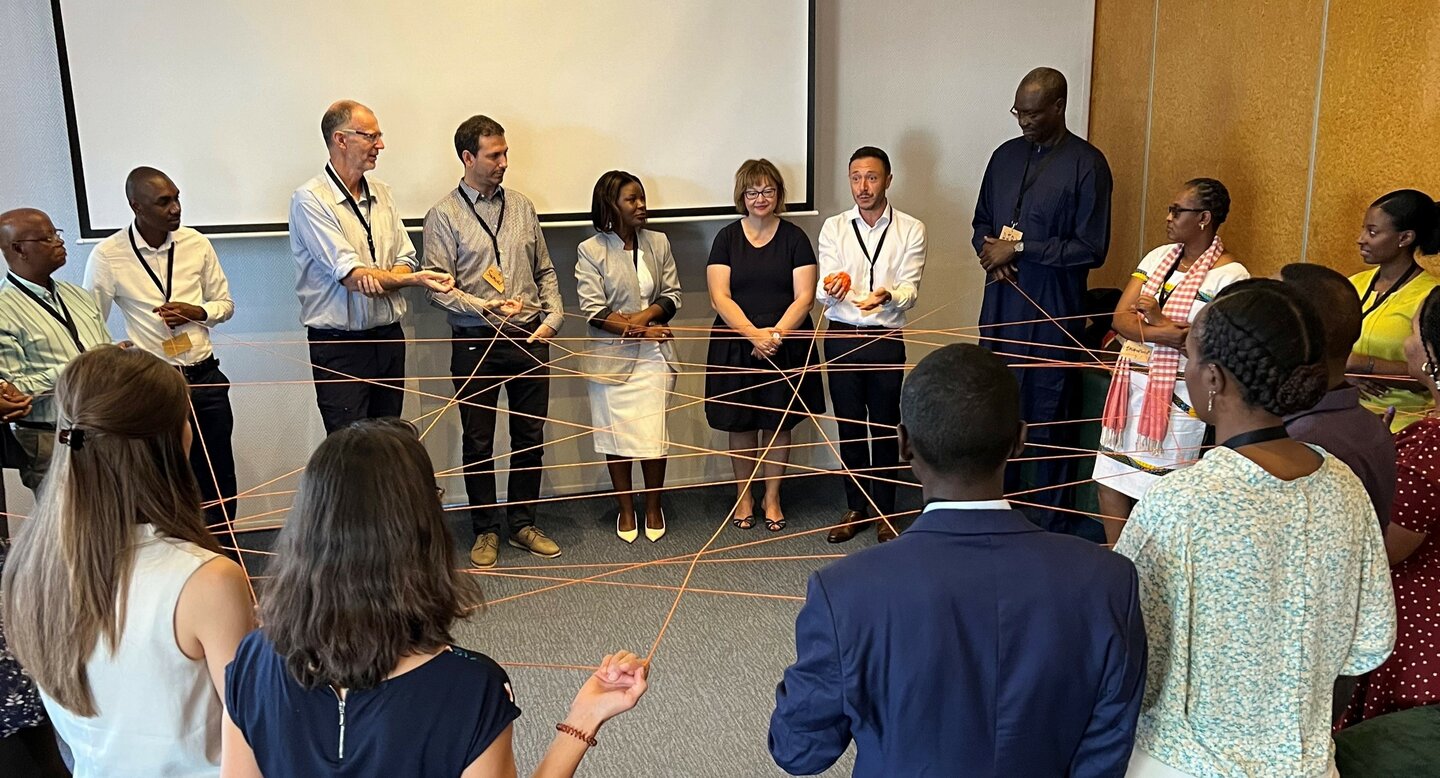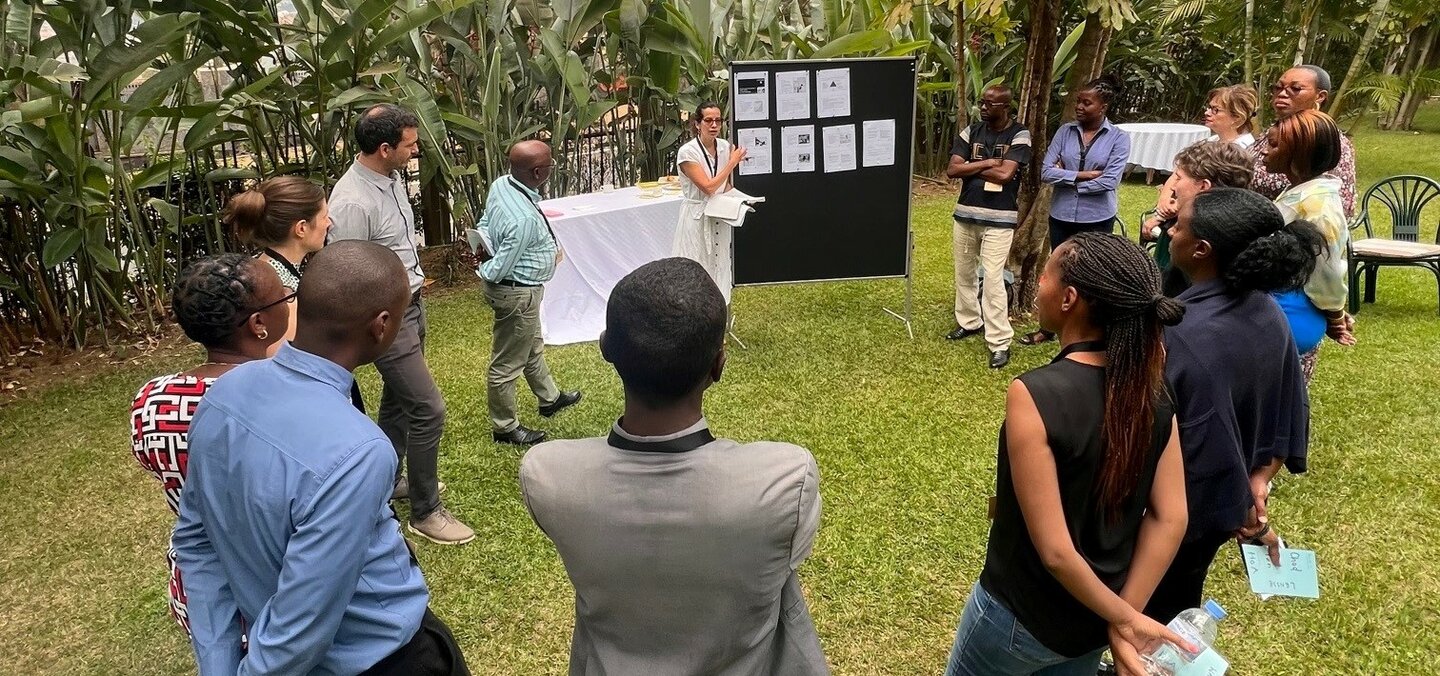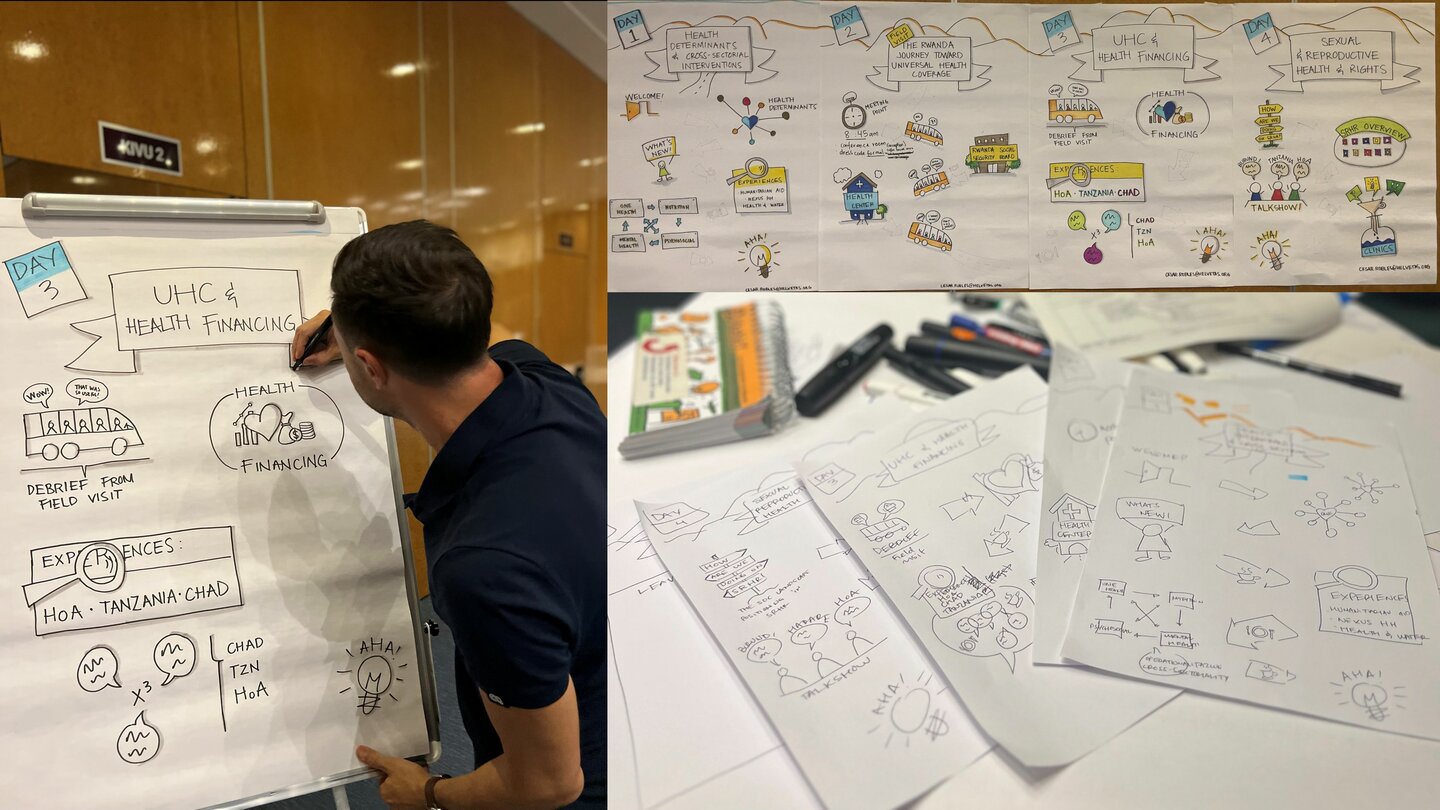In the world of conferences, seminars and workshops, there's no one-size-fits-all formula for keeping participants engaged. While we hope attendees are captivated by a topic's relevance, the reality often requires a bit more know-how. Over ten years of organizing and facilitating events, I've had plenty of opportunities to take note of what works – and what doesn't.
Below are some of my preferred approaches and tips for an engaging event.
1. Energizers and icebreakers
I rely on energizers, mini-energizers and ice breakers to infuse energy and foster connections among participants. These activities can breathe life into any gathering.
Here’s what this looks like in practice:
- At the start of an event, the lively "sociogram" icebreaker encourages participants to physically position themselves based on fun questions, fostering instant connections and a sense of community.
- During an unexpectedly long presentation, a 5-minute chair yoga interlude helped boost the energy of tired attendees and showed the conference's adaptability and commitment to participant well-being.
- Another useful method is the "web connection," which consists of forming a circle and tossing a ball of string around. Each person who catches the ball introduces themselves or answers a question before passing it on. At the end, you'll have a visible web showing the connections between participants. This web helps the facilitator highlight collaboration and interconnectedness, providing a smooth transition into the session.
- One of my favorites is “hot potato,” which consists of making a circle and tossing an object as music plays in the background. When the music stops, the person holding the object needs to answer a question or give a statement. This energizer makes people laugh and move and generates a lively atmosphere.

2. Variety is key
Continuously changing session settings and methods keeps things fresh. It prevents boredom and maintains participants' interest throughout the event. At most conferences, there’s usually some sessions where an expert speaks and everyone listens (we call this the one-to-many approach), and there is often no room to change the format. We try to make sure the next session follows another methodology, such as:
- A talk show: As moderator I introduce the session and invite speakers to join on stage while I play lively music. Then a few questions are pitched to them, thus diversifying voices and interjecting with questions from the audience.
- The World Café is group work where participants switch tables at a certain time, while the host remains and briefs the group on insights from the previous group, thus functioning as a relay-messenger.
- Clinics are group work based on active listening. One person shares a challenge, and then a round of ideas comes from participants at the table. The person who shared the challenge is encouraged not to respond or interact, and to listen until the round is complete.
- The 1-2-4-All is one of my favorite methods. It starts by asking participants to take a few minutes to silently consider a question or statement. Then they exchange in pairs, followed by reflections shared among the whole group.

3. Visual agenda
I provide visual agendas at the entrance of the room, offering a simplified roadmap of the event. This helps attendees orient themselves throughout the event.
How this works in practice:
- My process to create a visual agenda is simple, I draw one visual agenda on a flipchart per day. To create it, I do three things: 1) I read through the agenda to define the “blocks” of the day; 2) then I draw on an A4 paper, starting by framing (title, day) and 3) drafting icons and text per block from left to right and up-down. If needed, I then draw light arrows to indicate the flow of sessions and icons to signal breaks.
- To draft the icons, I use the “Bikablo” book by Martin Haussmann. I also had the chance to take an incredible training on this with Roland Siegenthaler from echtpraktisch.ch.

4. Timing matters
I kick off an energizer only when everyone in the room has joined the group. Waiting ensures everyone is on the same page and ready to participate. Of course, the larger the meeting, the more challenging this is.
How this works in practice:
- At a recent event in Rome, for some energizers we split into two groups, and it worked out well. It’s always worth finding creative ways to ensure everyone participates.
5. Demanding attention
If someone is visibly working on their laptop or using their phone and ignoring the session, I make a point to demand their attention in a respectful manner.
How this works in practice:
- At a recent conference I noticed that about 20 out of 50 participants were not paying attention – they were on their laptops and phones constantly. I discreetly asked the host of the session if I could make a one-minute interjection. I asked everyone to stand up and stretch (while share a message like, “We have 15 minutes left of valuable inputs form XYZ, so feel free to let go of your laptops and phones – you'll anyway have a lifetime still with that technology!”).
- For energizers in more relaxed settings, I use group clapping to draw everyone in.
6. The power of music
Music is a versatile tool. I use it not only for breaks and energizers but also to set the mood. Soft music is great for reflection, and cheerful tunes serve the purpose when it's time for a mental break.
How this works in practice:
- I don’t rely on the sound system of the conference room; I bring my own small speaker. This allows me to add music to exercises and moments at any time, for example when participants are meant to be thinking individually.
- For arrival and breaks I use the playlist “Packing music” by boris.dhr or “Conference music / training session” by arshinzaman.
- For fun energizers like “hot potato” I play songs that will make people relax and be playful, like the “chicken song” or “baby shark” – and it works!
- For individual thinking moments I use the playlist “Feel good beats.”
7. Laptop etiquette
I remind attendees that certain sessions don't require laptops. I encourage them to disconnect temporarily and fully engage in the experience by saying something like, “There will be time to spend on your laptop today, but the next 20 minutes of this session will be device-free.”
How this works in practice:
- I initially was afraid of asking people to close their laptops, but I quickly realized that most actually did; those who felt they had to continue using it would simply go to a quieter area to finish what they were doing and come back after a few minutes. I’m still finding out the best way to implement this etiquette.
8. Meditative elements
I incorporate meditative elements like a singing bowl to signal regrouping or deadlines.
How this works in practice:
- When calling back people into plenary, I take the singing bowl and walk around the room while tapping on the edge of the bowl, which brings forth not only a beautiful sound, but often big smiles from participants. The mood to call people back matters a lot for the collective feeling towards the next session. If I notice some people are not responding, I respectfully interject in their conversations and inform them that we are about to start. I invite them to move to a quieter area if they need to continue their conversation.
9. Running gags
Incorporating running gags or recurring mini energizers adds an element of fun and familiarity.
How this works in practice:
- Depending on the crowd, I choose a different gag every time. At a conference in Kigali, my gag was to ask people “What do you think I’m going to ask you to do now?” Followed by: “Stand up!” Anytime I took the center of the stage I asked “What’s next?” and people would laugh and yell “Stand up!”
10. Engagement over everything
Regardless of how compelling a topic is, keeping attendees engaged is essential. If they're bored, the impact of your event is diminished.
How this works in practice:
- When I am part of the organizing group, I make sure to give input at the beginning of the design of the agenda to ensure that elements that drive engagement are in place. As the planning continues, it’s my duty to protect those elements, because often the agenda changes and it’s common for the organizing team to try and squeeze more content into less time, which can be detrimental to the objectives of the event.
About the Author
Cesar Robles has been facilitating in-person, digital and hybrid conferences for the last 10 years, including events at the Swiss Parliament in Bern, the United Nations Palais de Nations in Geneva, WHO and FAO in Rome, and workshops in Albania, Bolivia, Rwanda, Italy, the UK, Nepal and Guatemala.

